Dublin city councillor Mannix Flynn is a sharp observer and a sharp dresser, outspoken, articulate and independent, with forceful views on a variety of subjects, not least on sartorial attire.
Author, artist and playwright, his background has been well-documented – how he was one of a family of 15 who grew up in a two-bedroom council flat on Dublin’s Mercer Street before a long period of incarceration in various State institutions. After a descent into alcoholism, he reconstituted his life in the late 1990s, became an actor, writer and activist and got involved in politics and today represents the south-east inner city.
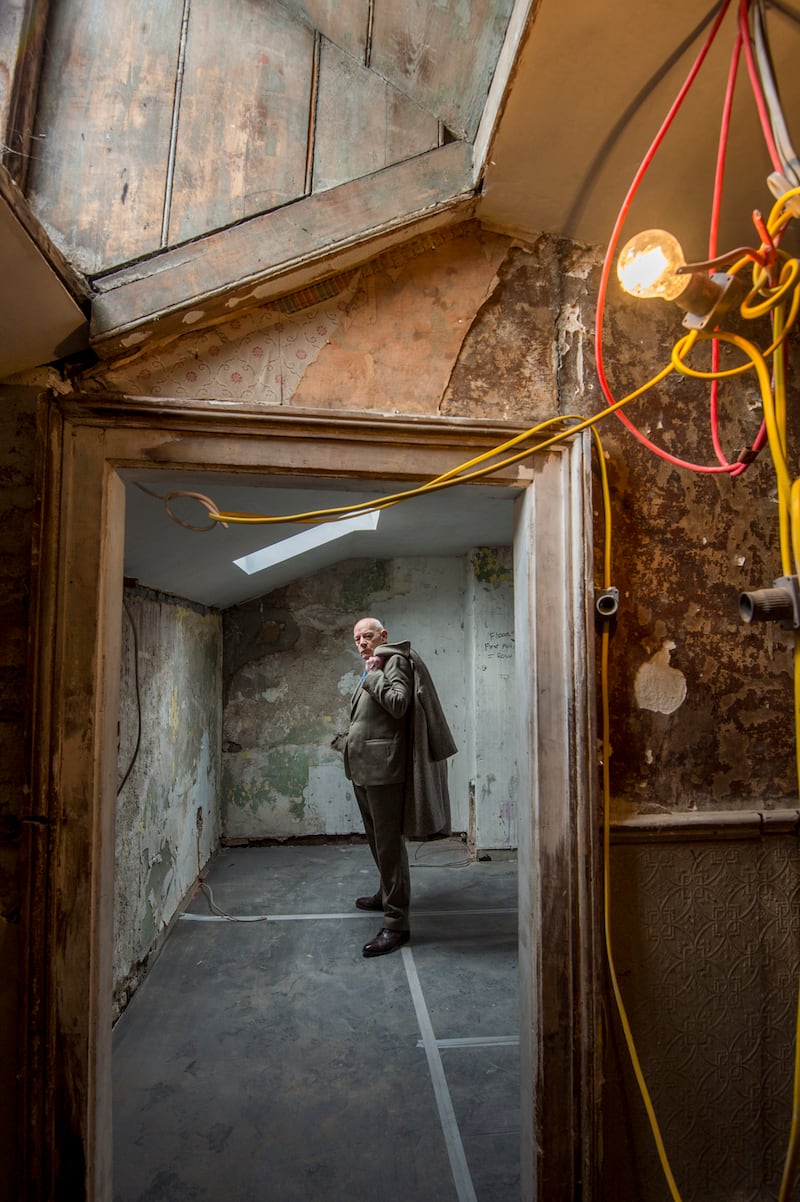
Not many may be aware of the fact that in the 1980s he was part of the Colony Room set in London’s Soho, the bohemian private members’ bar patronised by the artistic elite whose members included Francis Bacon, George Melly and Peter O’Toole. Through his various contacts in the art world, Flynn ended up managing Scott Crolla and Georgina Godley’s Savile Row fashion emporium, a magnet at the time for New Romantics. “We were subverting the traditions of Savile Row and selling the look to yuppies,” Godley recently recalled. The experience would have heightened Flynn’s appreciation of modish tailoring.
It was all a far cry from York Street and Sunday best. “Sunday best was defined by the church. On Monday, Tuesday and Wednesday, the clothes went to the pawn shop and were then taken out for Sunday best, Confirmation, Holy Communion – the good suit and the good boots,” Flynn recalls. “I knew the value of a good coat – it has to do with presence and pride. And it’s about self-confidence and self-reflection – you look in the mirror and that’s what’s interesting.” Presence is a word that crops up many times during our conversation, in which his references range from the Bible, the ancient Irish , Caravaggio and Michelangelo, to Saoirse Ronan’s accent and Woody Allen.
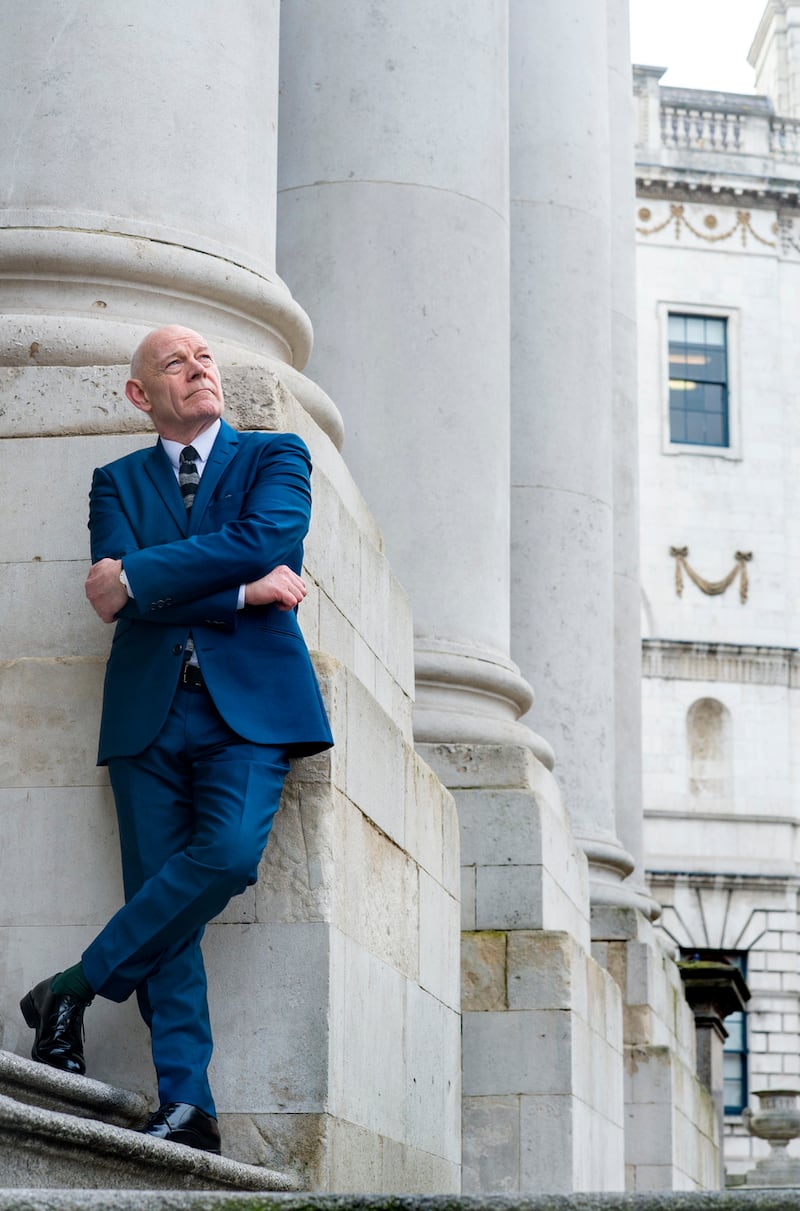
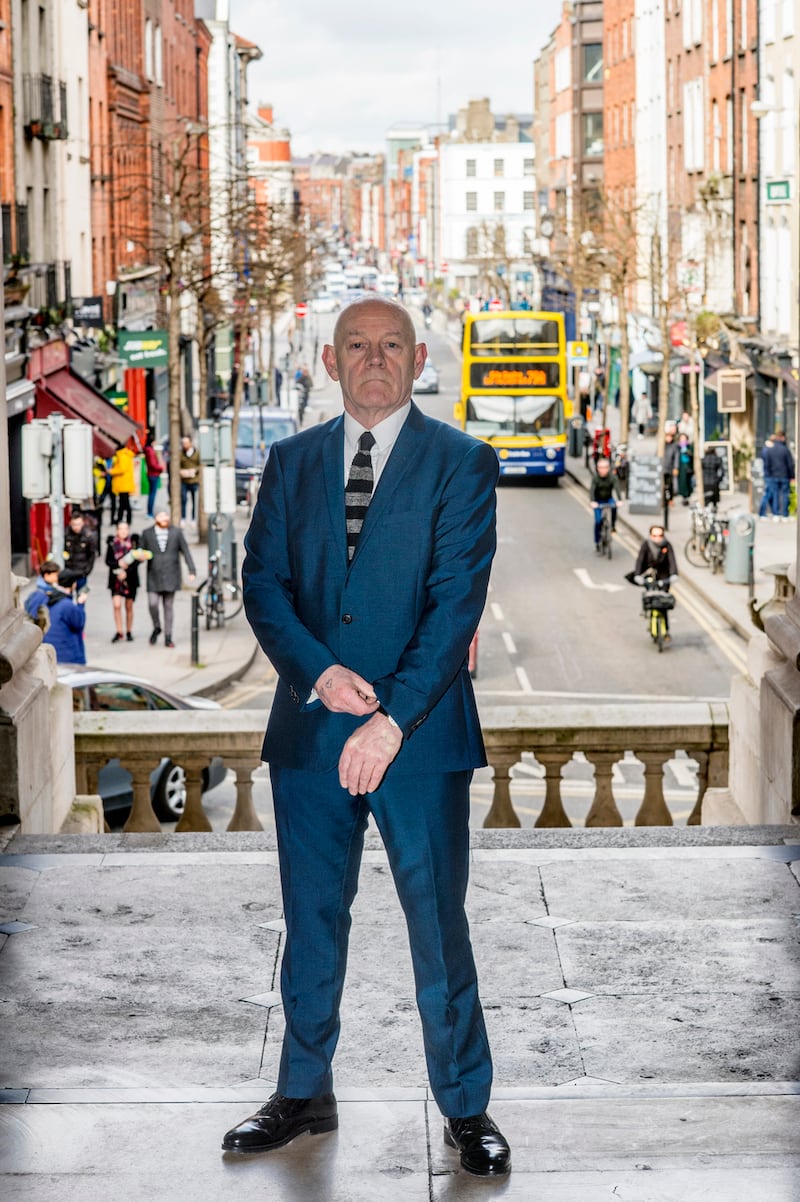
Flynn’s mother, Chrissie nee Gantley (whose image is currently on display alongside female leaders of the Irish rebellion on Parliament Street) was a street fruit seller on Camden Street “and the way these women dressed going out to sell was all part of my sensibility and talk of who was coming back from America and the kind of clothes they had and the stuff that came out of Brown Thomas or Gorevans and the local drapery shops – all these were influences. My suits were tailored because every shop had a tailor then,” he recalls.
He is watchful and observant, a flaneur of a kind. “Sometimes I stand in the street for an hour watching someone like [the hairdresser] David Marshall working around a customer like a ballet dancer or sculptor. Today, Saturday is the new Sunday – it is a whole little number for some – they have their push bikes and their baskets (with nothing in them) and they float around in their outfits on Saturdays,” he comments wryly.
A shrewd shopper with a keen eye for a bargain for a “proper working outfit”, he shops everywhere – in Brown Thomas, Arnotts, Louis Copeland, Dunnes Stores (easy-iron shirts), charity shops and Savile Row –“if I see a good suit and get good value. Most of the shoes that I have are 10 years’ old – Crocker & Jones last a lifetime. Armani, Gucci and Boss will catch your eye – I saw a beautifully cut Dolce & Gabbana coat in Brown Thomas at the end of the boom and it looked so beautiful. You could roll it in the mud and it would still look beautiful. You take these costumes and make them your own and the key to wearing clothes is never dress to hide, but to enhance.
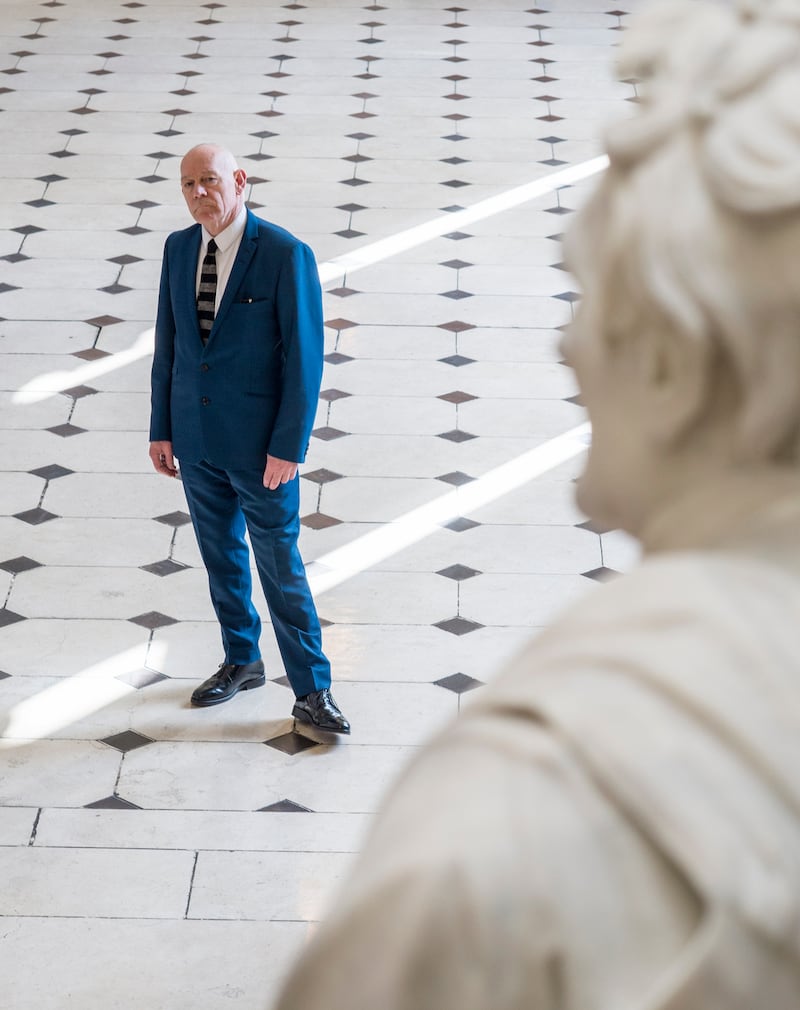
They know me in Brown Thomas and know what I am looking for and I will try a few things and come back. I watch the Chinese coming in and going bananas buying bags and on the phone as if on the stock exchange – at the same moment I have someone screaming at me on my phone about planning permission.” He is an entertaining, eloquent and unstoppable talker, a practised performer.
Today, he is wearing a handsome 1920s’ black double-breasted coat from a second-hand shop on Capel Street (“I like wearing dead people’s clothes”) with black side-striped trousers from Brown Thomas, refurbished second-hand shoes from Wild Child, a shirt bought five years ago in Barcelona and a Swedish jumper from Indigo & Cloth. That mix of high-end with classic, vintage and second-hand is his style. “If you have a good shirt, no matter what state it is in, it will hold and men notice these things.”
One person for whom he has huge admiration is weather forecaster Jean Byrne. He has taken thousands of photos of her on TV for an artwork “because you are looking at Ireland. She has radicalised the weather, changed everything. So here is Jean telling us about a gale force 10 on the way and we are glued to the costume-cut striped S &M biker gear that looks like she’s off the rails. So we batten down the hatches while we’re drooling at the mouth. Instead of representing the weather, she is representing herself, clever and smart and now it is not the weather, it is who is delivering the weather report. Through her clothes, she has become a sensation.”
There was no Jean Byrne, no TV in his childhood. “The first relationship you have is with your clothes. When we were children, we needed to get our clothes in the morning, get on our armour and get out the door as quickly as we could. I now decide in the morning what I am going to wear. I want to be comfortable and go about my business. These rituals are part of the working day and I represent the people who have elected me and I want to give them the best with the best sensibility so I will never turn up unshaven.”
His latest project is a feature documentary called Land Without God, which took him 15 years to write and five years to film using first-hand witnesses, landscape and poetry and is, he says, about how to exit trauma, "a State document with global relevance". It will be premiered in October next year.
Mannix Flynn has forthright views on the style of Irish politicians:
Mannix Flynn on . . .
Independent TD Mick Wallace
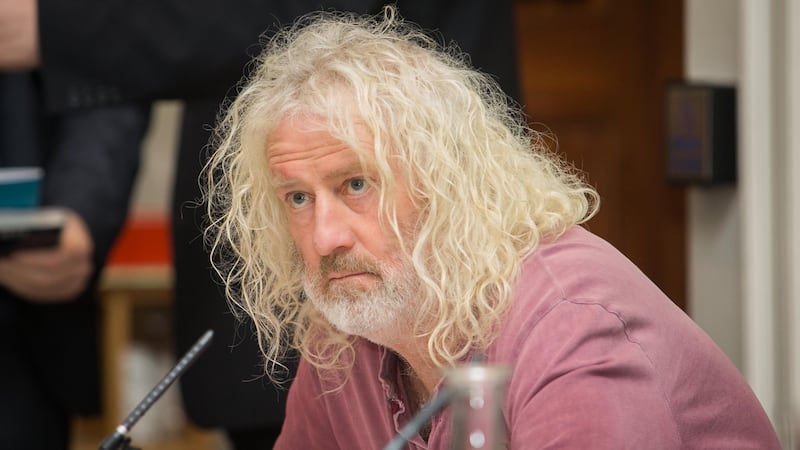
“Mick Wallace and the manner in which he presents himself gets more attention for Mick Wallace than any other.”
Taoiseach and Fine Gael leader Leo Varadkar
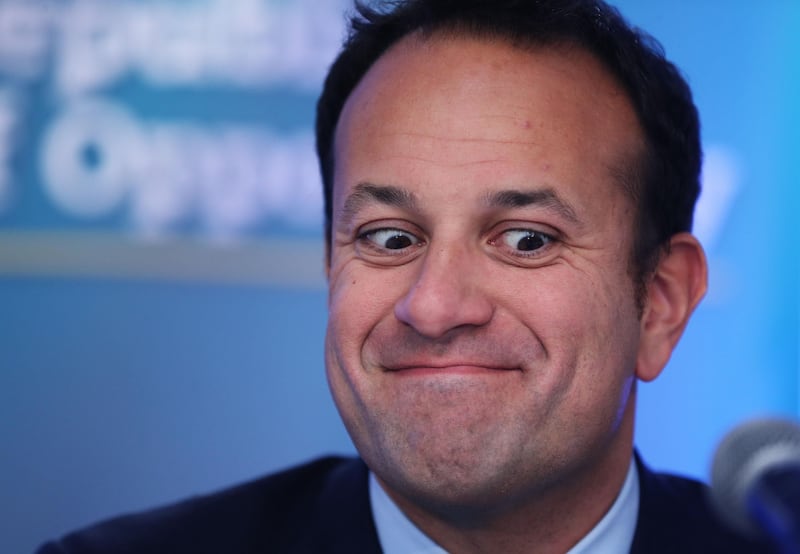
“In his devil-may-care jeans and sweater, he is appealing to a sensibility that reeks of cash status.”
Minister for Housing Eoghan Murphy

“The minister for rebuilding Ireland wears crisp collars and open-neck shirts, American-style, like Bill Clinton, with sleeves rolled up – he’s the minister for rolled-up sleeves.”
Minister for Foreign Affairs and Tánaiste Simon Coveney
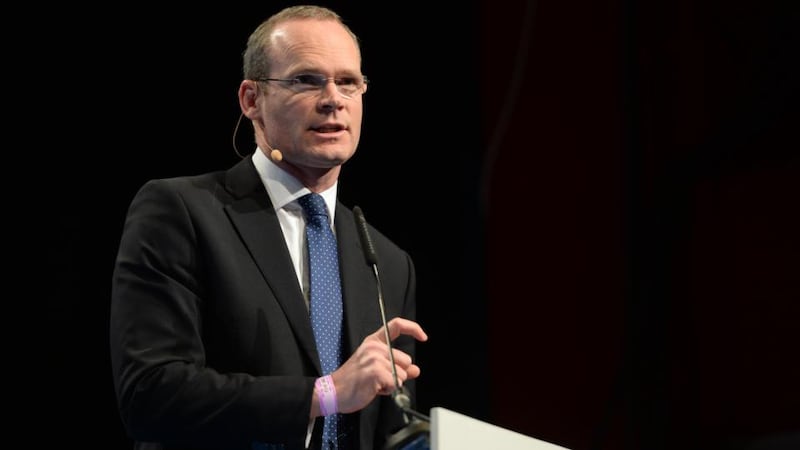
“He has that earnest suit look – he’s not heterosexual, gay or fluid. All his clothes will tell you that he is nondescript.”
Fianna Fáil leader Micheál Martin
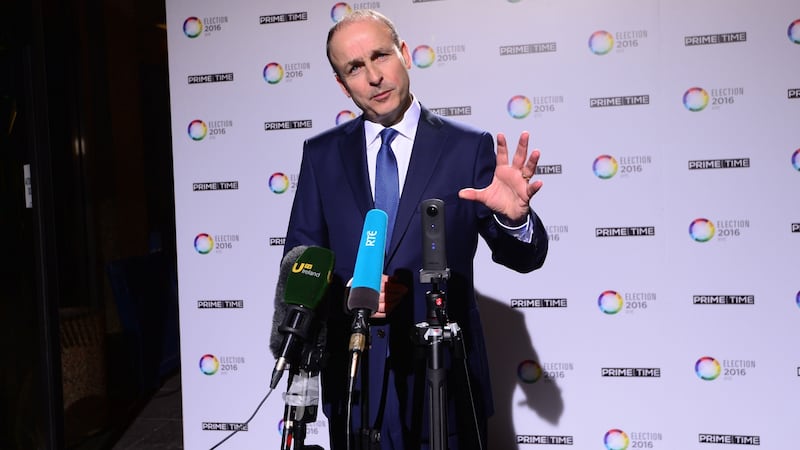
“He has his look but needs to change – his boxy suits, more suited to the ’20s or ’30s, are out of fashion.”
The Healy Rae brothers
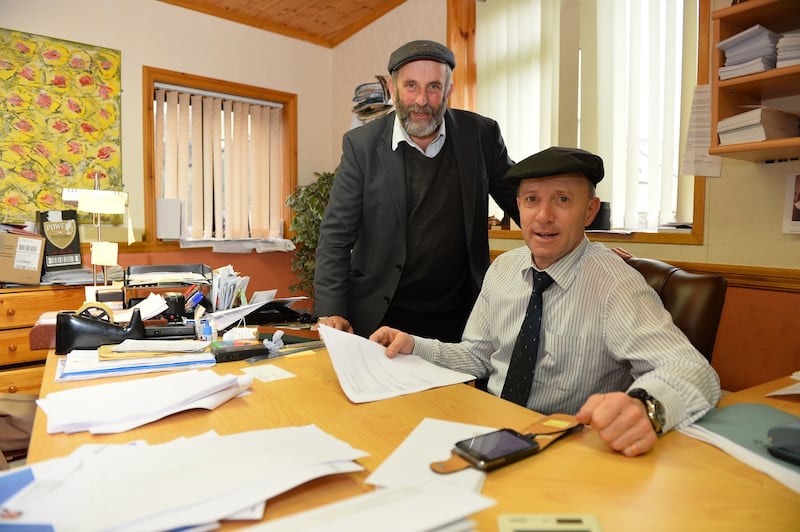
“With their caps and scarves, they show the power of accessories. Their father always had his cap on – even in bed – because [their caps] become part of their whole persona.”
Independent TD Clare Daly
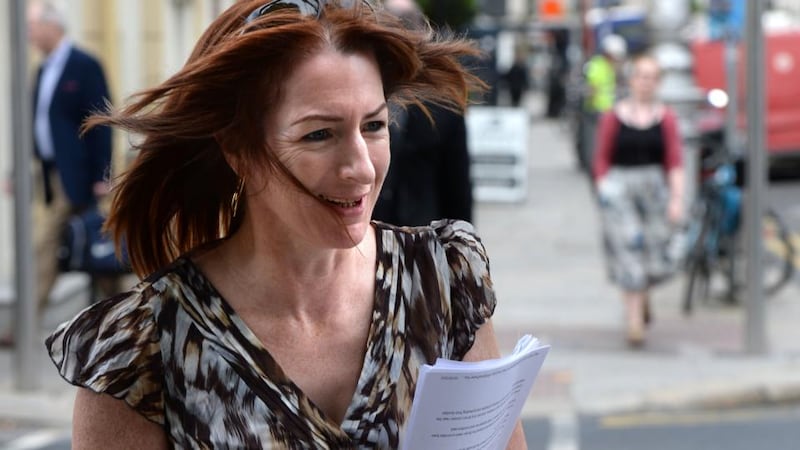
“She uses dress very effectively and so does Ruth Coppinger and their attire is how they beat the enemy. Their clothes are their weapons. Such politicians use dress codes to achieve their ends. They don’t give [their adversaries] any satisfaction, so it is about the point of least resistance. So Leo’s socks are in direct competition with Mick’s pink tee-shirt.”
President Michael D Higgins and his wife Sabina Higgins
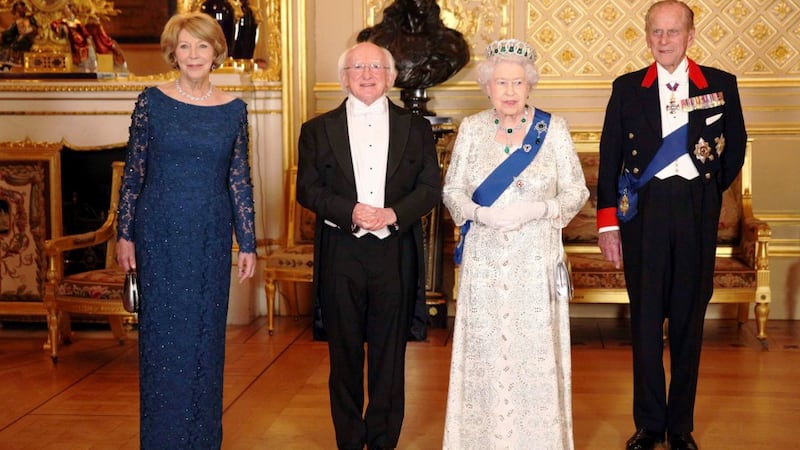
“They do an exceptional job. His attire was reconstituted entirely – how you present yourself as a statesman and how you wear the office role.”
Minister for State Mary Mitchell O Connor
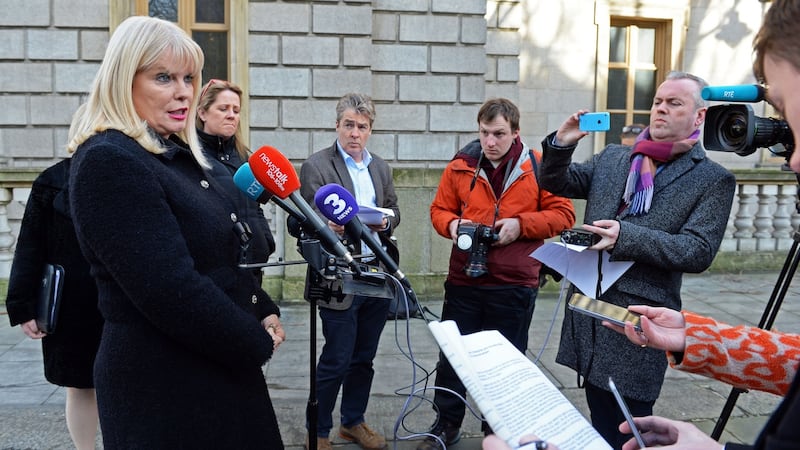
“She has that kind of Glenageary, south Co Dublin going-out-to-the-shop and dressing up. It is unfinished business. It is asserting oneself in an interesting way, but when you compare it to Christine Lagarde, Lagarde gets away with it because of her elegance and aloofness.”
















